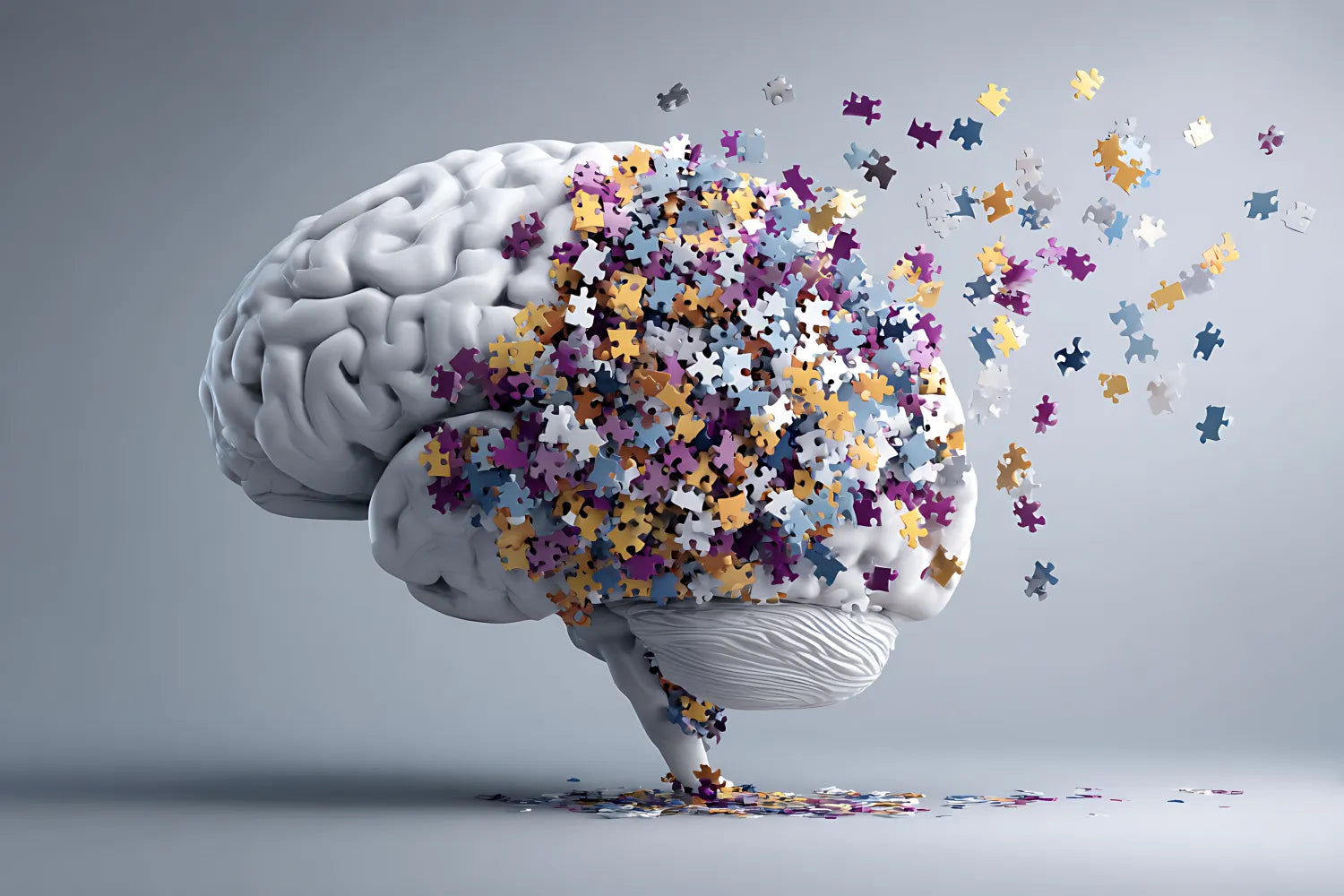
Dr. Eric Venn-Watson’s Highlights
-
The endocannabinoid system is home to receptors that both stimulate appetite and satiate hunger.
Engaging these receptors with the body’s own endocannabinoids can help support appetite regulation.
Taking fatty15 can help your body make a fully-acting endocannabinoid, PDC (pentadecanoylcarnitine), which can help you take control of your cravings.
Eating a balanced diet and maintaining a healthy weight would be easy if it weren’t for that ravenous appetite! Sometimes it seems like the more we focus on losing weight, the more tempted we are to eat more food.
We need food to survive, but our appetites are regulated by a specialized system in the body known as the endocannabinoid system (ECS). This system can both stimulate hunger and satiate it.
Together, we’ll talk about how the ECS functions and how supporting your body’s ability to produce endogenous cannabinoids can help bring your appetite back into balance.
What Is the Endocannabinoid System?
The ECS is a system of bodily regulation. A vast web of receptors located all over your body, the ECS helps keep your body in a balanced or homeostatic state.
The receptors in the ECS collect data from external sources and send the information back to your brain. The brain then processes the information and sends out effectors to take action to bring the body back into balance.
This is called a feedback loop. Feedback loops can be positive, causing the body to increase activity, or negative, causing the body to dial back the production of a hormone or slow your heartbeat.
A good example of the ECS in action is hunger. When you haven’t eaten in a few hours, receptors in the stomach send a message to the brain to let it know food is needed. The brain then sends out effectors, which in this case are hormones secreted in the gastrointestinal tract, that create a sense of hunger and increase your appetite.
Understanding Receptors
Two receptors in the ECS have been identified to date. They are the cannabinoid 1 receptor (CB1 receptor) and cannabinoid 2 receptor (CB2 receptor). These receptors collect data from outside and within, helping the brain determine what actions need to be taken to help rebalance the body.
CB1 Receptors
These receptors are located primarily in the brain and spinal cord. They are found in and among the cells of the central nervous system.
They control processes like:
- Cognitive function
- Body temperature
- Sleep
- Emotions and mood
- Hunger
- Pain regulation
- Motor control
CB1 receptors are the most numerous in the body. Stimulating these receptors can help bring balance to functions that become unbalanced over time.
CB2 Receptors
The CB2 receptors are located in the cells and tissues of the immune system along the digestive tract. They are directly involved with immunity and with the release and regulation of cytokines, which are inflammatory cells.
CB2 receptors work together with CB1 receptors. Because of this, researchers have linked immune deficiencies with cognitive decline.
How Does Receptor Stimulation Affect Appetite?
Because CB1 receptors control appetite, researchers once tried to create an inverse agonist (a drug that would block CB1 receptors) to help aid people trying to lose weight. Unfortunately, the results weren’t good.
Because the CB1 receptors are also involved with mood balance, the lack of CB1 stimulation while on the drug caused the users to become depressed and irritable. Suppression of the CB1 receptors also caused cognitive issues and, in some people, a complete loss of appetite that was unsafe.
The creators of the drug were on the right path in that they understood that manipulation of the CB1 receptors could help us better control our hunger pangs. Still, complete suppression of the receptors wasn’t a viable solution.
A better idea has been to support the body’s ability to create its own endogenous cannabinoids to bind to the receptors and help them regulate hunger appropriately.
Cannabinoids: Receptor Stimulators
Both CB1 and CB2 receptors are stimulated by cannabinoids. These are special compounds that can interact with and bind to the receptors, helping them relay information to the brain and keep the body balanced.
There are three different types: phytocannabinoids, synthetic cannabinoids, and endocannabinoids.
- Phytocannabinoids. These are cannabinoids that are found in the Cannabis sativa plant. The most popular is THC. If you’ve ever experimented with THC, you probably understand the CB1 receptors' role in activating hunger! THC stimulates the CB1 receptors and can make a person using THC feel excessively ravenous. A condition that has been referred to as the “munchies.”
- Synthetic cannabinoids. These cannabinoids are created synthetically but can be of use in helping encourage the appetite of patients undergoing chemotherapy who often feel nauseous or unable to eat.
- Endocannabinoids. These are cannabinoids your body makes on its own, sometimes referred to as endogenous cannabinoids. The body is an expert at making the right tools for the job, and it makes three endocannabinoids that help stimulate its receptors. They are anandamide, 2-AG, and PDC (pentadecanoylcarnitine).
Let’s take a look at how the body makes these endocannabinoids and how they play a role in appetite regulation.
Endocannabinoids at a Glance
For years we were only aware of two endocannabinoids: anandamide and 2-AG.
- Anandamide was the first ever discovered endocannabinoid. It can only bind to CB1 receptors and is known to play a role in regulating mood and pain. As such, it was given the Sanskrit word for “bliss.”
- 2-AG. This endocannabinoid was an important discovery because it was the first fully-acting endocannabinoid ever isolated in the human body. Fully acting means that 2-AG can stimulate and bind to both CB1 and CB2 receptors.
Until recently, it was believed that 2-AG was the only fully-acting cannabinoid the body could produce. New studies have discovered a second, which carries the potential of helping us bring balance and regulation to our ECS and to the systems it governs, like your appetite.
Pentadecanoylcarnitine (PDC)
A new study revealed that the body can make a second, fully-acting endocannabinoid by synthesizing carnitine and pentadecanoic acid. This is an exciting discovery because it gives our bodies another vehicle for activating the ECS receptors and keeping them functioning properly.
Pentadecanoic Acid
All endocannabinoids start with the synthesis of fatty acids. To make PDC, the body needs pentadecanoic acid, also known as C15:0. C15:0 is the newest essential fatty acid on the block, and you might not be familiar with it. We’ll introduce you.
What It Is
C15:0 is an odd-chain, saturated fatty acid that the body needs to thrive but can’t readily make on its own, making it an essential fatty acid. Although we have been told that all saturated fats are bad for us, science now supports that that is not the case.
Newly discovered benefits of some types of saturated fats, specifically a class called odd-chain saturated fatty acids, including C15:0 are changing the way we think about essential fats. Science supports that higher levels of odd-chain saturated fatty acids, especially C15:0, are associated with better heart health.*
Further, higher levels of C15:0 has been repeatedly associated with healthy cholesterol and triglyceride levels as well as improved heart health and better appetite regulation.*
What It Does
On its own, C15:0 has a lot of important benefits for your body like:*
- Increased mitochondrial function within your cells. As we age, the mitochondria in our cells become sluggish. C15:0 helps improve their function by up to 45%, so your cells can fuel your body with the energy you need.
- Stronger cell walls. Cell walls can become flimsy and weak as they age. C15:0 integrates into cell walls giving them structure and support to stay strong and protected.
- Improved cellular signaling. In addition to helping your body create PDC to bind to ECS receptors, C15:0 also binds to receptors in your body called PPARs, that further regulate appetite, mood, sleep, and other processes.
By increasing your C15:0 intake, you can enjoy numerous health benefits that translate into a healthier, happier you.
Elevate your cells. Elevate your self.
Buy NowWhere To Get C15:0
C15:0 is primarily found in trace levels in whole-fat dairy products, as well as some types of fish and plants. However, simply increasing your intake of whole-fat dairy products comes with extra calories, sugars, and high levels of the "bad" even-chain saturated fats.
A better solution is fatty15. Fatty15 is a research-backed supplement, born of scientific discovery, containing just one ingredient, FA15™. This pure, vegan-friendly, sustainably produced, award winning version of C15:0 is the perfect solution for reestablishing your circulating levels of C15:0 and helping improve your health (and your ECS signaling).*
Don’t Grab a Snack, Grab Your Fatty15!
Regulating your appetite might take more than your willpower alone can offer. Fatty15 is an award-winning supplement that can help your body produce an important, fully-acting endocannabinoid to better regulate your whole body and mind health, and control your hunger.*
Taking fatty15 can help you achieve your goals faster and take care of your body while you’re getting there.
Sources:
Ghrelin Hormone: Function and Definition|My Cleveland Clinic.org
The CB2 receptor and its role as a regulator of inflammation | PMC
Dysregulation of Systemic Immunity in Aging and Dementia | Frontiers In.org

Eric Venn-Watson M.D.
CEO, Co-Founder
Senior Scientist, Co-Founder
Eric is a physician, U.S. Navy veteran, and Co-founder and COO of Seraphina Therapeutics. Eric served over 25 years as a Navy and Marine Corps physician, working with the special forces community to improve their health and fitness. Seraphina Therapeutics is a health and wellness company dedicated to advancing global health through the discovery of essential fatty acids and micronutrient therapeutics.
You May Also Like...
When Does Cognitive Decline Start?
Almost everyone will experience some cognitive decline in their lifetime. Learn which decade is most closely associated with thinking trouble.
List of Cognitive Changes in the Elderly as They Age
Are you wondering where your keys are? Not being able to find them could be due to cognitive changes in your brain as you age.


